Every time you slide behind the wheel, ready to hit the open road, there's an unspoken trust between you and your vehicle. You trust it to get you to your destination safely and it trusts you to have kept it in optimal condition. But how often do we pause to ensure our trusty ride is indeed ready for the journey?
Especially for those in Coolum and Coolum Beach, where holiday makers often set out for long drives, ensuring your vehicle is in top shape is paramount. Let's dive into the essential checks you should be making before hitting the road.
Table of Contents:
- Tyre Tread and Pressure: The Road Grip Essentials
- Fluid Levels: Keeping Your Engine Smooth and Responsive
- Brakes and Brake Pads: Your Primary Safety Measure
- Lights and Indicators: Communicating on the Road
- Battery Health: The Heartbeat of Your Vehicle
- Emergency Toolkit: Prepared for the Unexpected
Tyre Tread and Pressure: The Road Grip Essentials
The grip your tyres provide is crucial for safe driving. Regularly checking the tread depth ensures you're not driving on bald tyres, which can be hazardous, especially in wet conditions.
- Optimal Tread Depth: Essential for preventing hydroplaning on wet roads.
- Air Pressure: Ensures even tyre wear and optimal fuel efficiency.
Checking tyre pressure isn't just about ensuring a smooth ride; it's about safety, fuel efficiency and prolonging the life of your tyres.
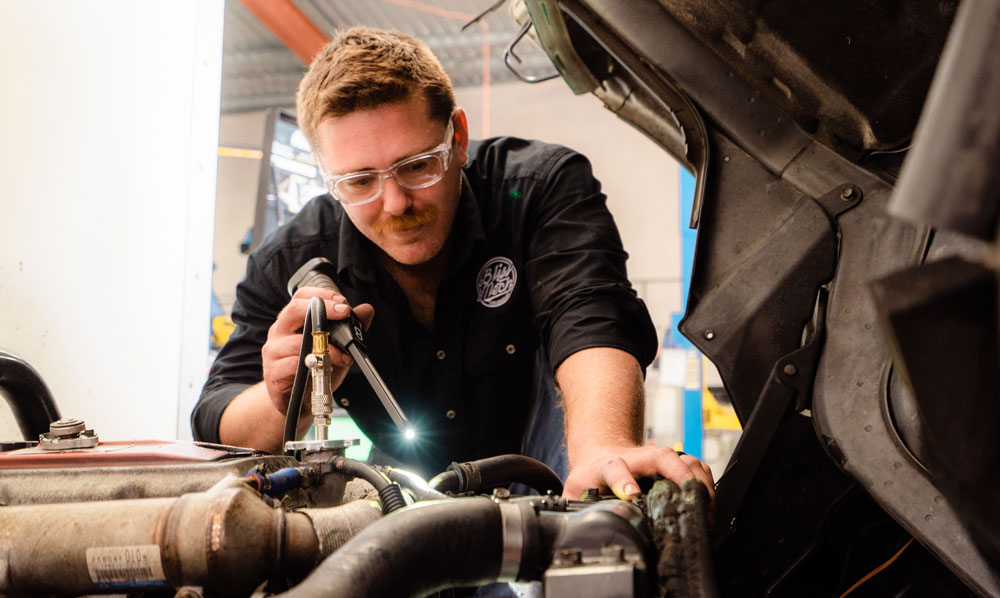
Fluid Levels: Keeping Your Engine Smooth and Responsive
Every vehicle operates smoothly thanks to a symphony of fluids working together. These fluids, often overlooked, are the unsung heroes of our daily commutes and long drives.
- Engine Oil: The lifeblood of your engine.
- Coolant: Keeps your engine from overheating.
- Brake Fluid: Essential for responsive braking.
- Power Steering Fluid: For smooth steering.
- Windscreen Washer: For clear visibility.
Each fluid plays a pivotal role in your vehicle's operation. Low or dirty fluids can lead to decreased performance and potential damage.
Brakes and Brake Pads: Your Primary Safety Measure
Your vehicle's ability to stop efficiently can be the difference between a close call and a catastrophe.
- Brake Pads: Check for wear and tear.
- Brake Discs: Should be free from deep grooves or cracks.
Regular checks ensure your brakes respond when you need them most.
Lights and Indicators: Communicating on the Road
- Headlights: For visibility during night or fog.
- Brake Lights: Informing drivers behind you.
- Indicators: Communicating turns and lane changes.
Functional lights are crucial for safety, ensuring you see and are seen by other drivers.
Battery Health: The Heartbeat of Your Vehicle
A healthy battery ensures your vehicle starts every time and powers all electronic components.
- Check for Corrosion: White, powdery deposits can hinder performance.
- Battery Life: Most last 3-5 years. Consider replacement if older.
Your vehicle's battery is its heartbeat and regular checks ensure it keeps ticking.
Signs of a Weakening Battery:
- Slow Engine Crank: When you attempt to start the vehicle, the cranking of the engine is sluggish and takes longer than usual to start.
- Check Engine Light: Sometimes, the check engine light might pop up due to a weak battery.
- Swollen Battery Case: If your battery case is bloated, it could mean the battery itself is overheating, which reduces its lifespan.
- Electrical Component Issues: Problems such as dimming headlights, power windows operating slower than usual, or the radio not working can all be signs of a deteriorating battery.
Emergency Toolkit: Prepared for the Unexpected
- First Aid Kit: For minor injuries.
- Jumper Cables: In case of a flat battery.
- Torch: For night-time emergencies.
- Basic Tools: For minor repairs.
Having an emergency toolkit can be a lifesaver, ensuring you're prepared for unexpected situations on the road.
As you prepare for your next journey, remember that a well-maintained vehicle isn't just about performance; it's about safety. Whether you're a local in Coolum heading out for a weekend getaway or a holiday maker in Coolum Beach planning a cross-country trip, these checks are essential. And if you ever need professional assistance, don't hesitate to get in touch via our contact page. At Bliss Mechanics, we're dedicated to ensuring every journey you embark on is a safe one. Safe travels!

Your car battery provides the necessary electrical energy to start your engine and keep various systems running smoothly. However, over time, it undergoes wear and tear, and its ability to hold a charge diminishes. By being aware of the signs that point to a failing battery, you can take proactive measures to replace it before it leaves you stranded on the side of the road.
Table of Contents:
- Slow Engine Crank
- Dim Headlights And Electrical Issues
- Warning Light On The Dashboard
- Frequent Need For Jump-Starts
- Age of the Battery
- Wrapping Up
1. Slow Engine Crank
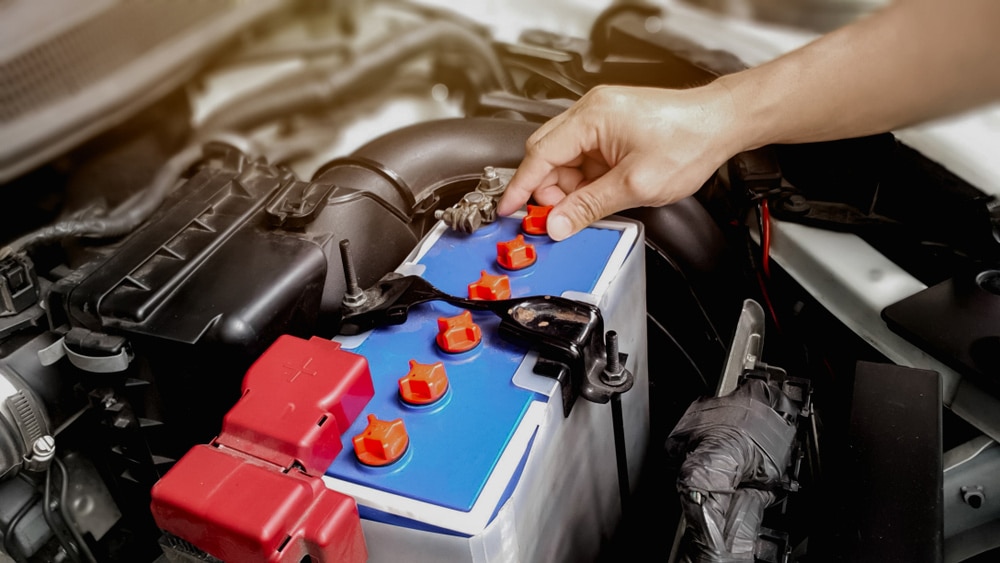
It is one of the earliest signs that your car battery is nearing the end of its life. The engine should start quickly and smoothly when you turn the key or push the ignition button. If you notice a delay or sluggishness in the cranking process, it's a sign that your battery is losing its ability to provide sufficient power.
Ignoring this symptom may leave you stranded with a car that won't start, so promptly addressing the issue is essential. Moreover, cold weather can exacerbate this problem as batteries tend to perform poorly in low temperatures.
2. Dim Headlights And Electrical Issues

If you've noticed that your headlights seem dimmer than usual or that your electrical systems, such as the radio or power windows, are experiencing glitches, it's a clear indication that your car battery is struggling. Dim headlights often occur when the battery doesn't have enough power to supply adequate electricity to the lighting system.
Additionally, electrical issues like flickering lights or erratic performance of other systems may arise due to an inconsistent power supply from the weakening battery. Sometimes electrical issues can be caused by other factors, such as faulty wiring or alternator problems. However, the battery is often the first component to check.
3. Warning Light On The Dashboard
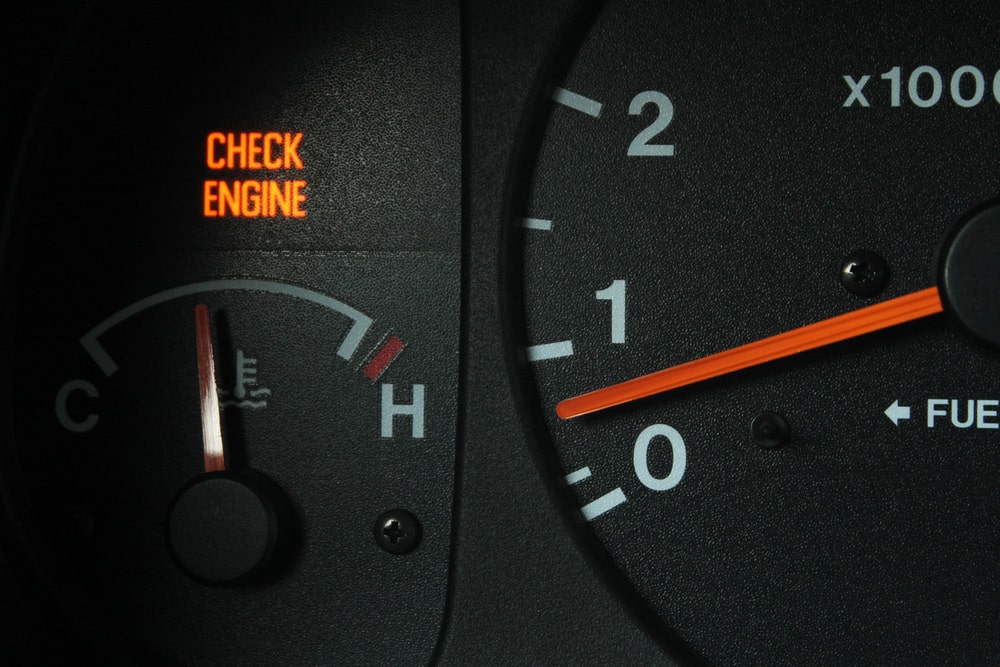
Modern vehicles are equipped with advanced systems that monitor componentry, including the battery. When your car's onboard computer detects an issue with the battery, it will illuminate a warning light on the dashboard. If you see this light, don't ignore it.
Visit a professional who can assess and determine if a car battery replacement is necessary. In some cases, the warning light may also indicate a problem with the charging system, such as a faulty alternator.
4. Frequent Need For Jump-starts
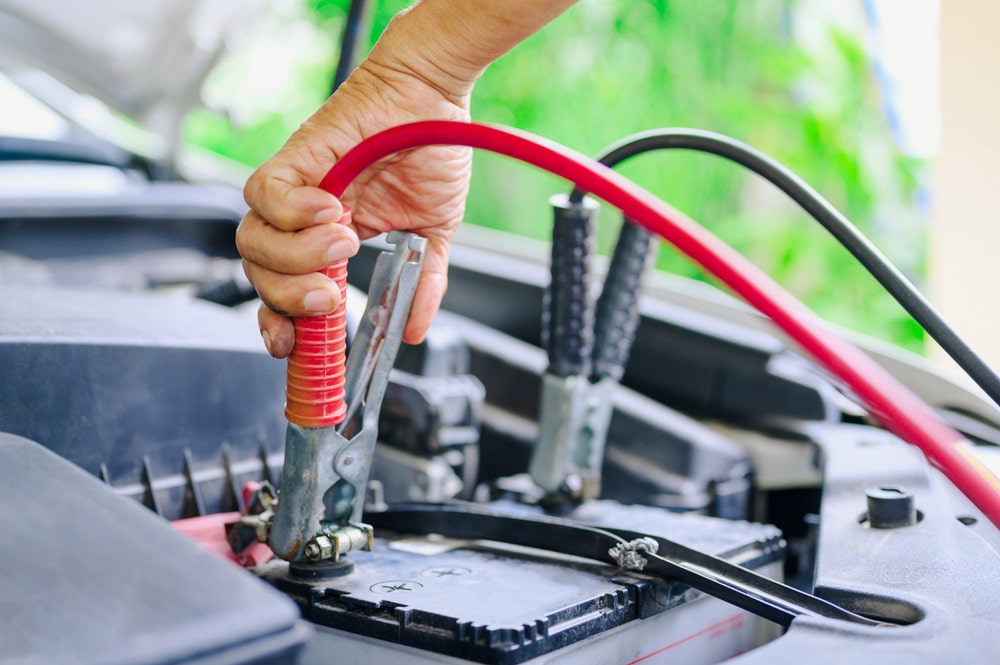
Has jump-starting your car become a regular occurrence? If so, it's a sign that your battery is no longer holding a charge effectively. While jump-starting can temporarily revive a dead battery, it's not a long-term solution. Continuously relying on jump-starting not only inconveniences you but also puts unnecessary strain on the electrical system.
Furthermore, if you've recently replaced your battery and find yourself needing jump-starts again, it might indicate a larger issue with the vehicle's electrical system or charging system. In such cases, it's advisable to have a professional inspect your car to identify the root cause of the problem.
5. Age Of The Battery
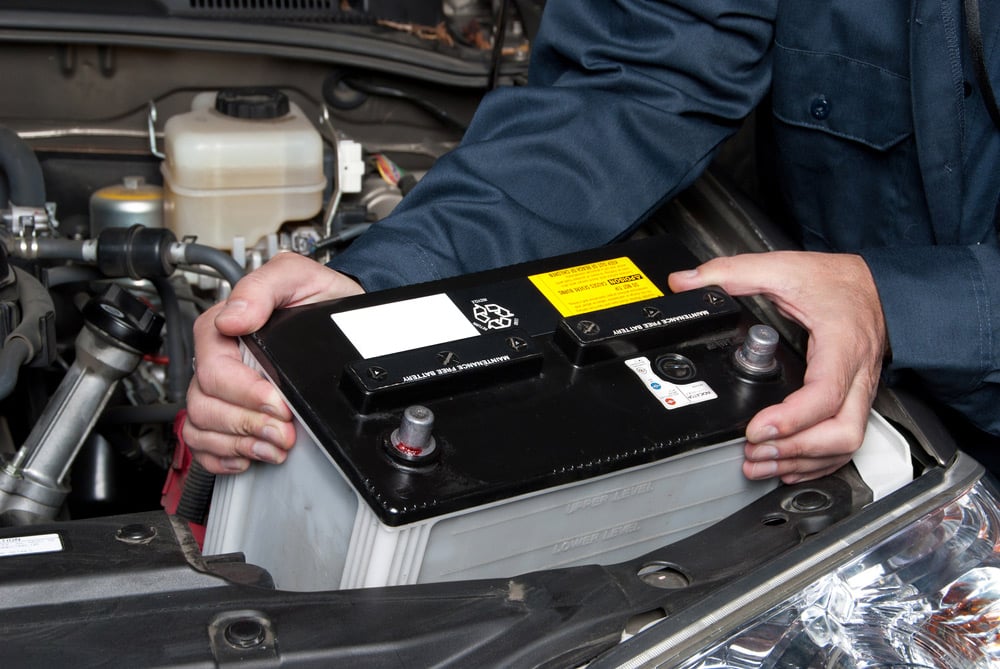
Even if you haven't noticed any specific signs of battery failure, it's crucial to consider its age. On average, car batteries last between three to five years, depending on various factors such as usage patterns, weather conditions and maintenance. If your battery is approaching or surpassing this timeframe, it's wise to consider a replacement proactively, even if it appears to be functioning adequately.
Regularly replacing your car battery before it fails can prevent unexpected breakdowns and save you from the hassle of being stranded. To determine the age of your battery, you can check the manufacturing date stamped on the battery case or ask a professional.
Wrapping Up
If you notice any of these signs, seek professional assistance to get a replacement battery for your car. At Bliss Mechanics, we are dedicated to providing prompt and cost-efficient service if you face any battery issues.
If your car is having trouble starting or the engine dies while you're driving, you may have a problem with your car battery. Battery problems are common and can be caused by various factors, including age, wear and tear, or corrosion. If you think you may have a car battery problem, it's important to diagnose and get your car battery fixed as soon as possible to avoid further damage.
Table of Contents:
- What to do if your car won't start
- What to do when your car battery dies
- How to prevent car battery problems
- The best way to charge a car battery
- How to tell if your car battery is bad
Keep reading for tips on how to troubleshoot car battery problems to get your vehicle running smoothly again.
What to do if your car won't start

If you're on the road (at the lights, for example) and your car won’t start, the most important thing is to move your vehicle to a safe place as soon as possible.
Try to diagnose what's wrong with your car or the cause of your issue because it may not necessarily be your battery. For instance, if you've been sitting in the carpark listening to the radio with the engine off, you’ll have a pretty good idea your battery is flat and why.
However, if you can operate all your electrical components, such as the headlights and the radio, it's probably not a battery issue. If you've charged your battery and it dies quickly, you likely have a problem with your alternator. However, the only sure way to know is to bring your car to your local trustworthy mechanic.
What to do when your car battery dies

If possible, try to identify the cause of your flat battery, for example, whether you left the lights on. Knowing the cause will help you or your mechanic assess how serious the problem is and what your next step should be. If you don't know or aren't sure, it's best to have your car checked by a professional.
The most common solution to a dead battery is jumping the battery. Jumper cables are a must to have in any car. You'll be glad they're there when you need them.
Keep in mind that jump starting a car can actually damage the car if done incorrectly with some modern cars. It's vital that you connect the positive cable (usually red) to the positive battery terminal and the negative cable (usually black) to the negative terminal. Doing this the wrong way round can cause serious, possibly irreparable, damage to your car. If you're not confident, call roadside assist or a friend/family member who knows what they're doing.
Do not turn off the engine immediately once you've started the car again. You should drive your car for at least 15 minutes, ideally half an hour, to give your car a chance to charge its battery. If your car struggles to start again, it's a good sign you may need to replace your battery. In addition, we'd recommend bringing in your vehicle for a check-up to ensure it isn't a problem with your alternator or another issue.
How to prevent car battery problems

1. Drive your car
One of the best things you can do for your battery is drive your car. Leaving a car to sit for too long without running the battery will drain it. Very short trips may not be enough because the alternator and engine aren't given proper time to charge the battery fully. Don't panic. A quick drive to the shop shouldn't wreck your battery. However, try to take your car for a long drive (at least thirty minutes or more) every two or three weeks to give your battery a chance to charge. If this isn't viable, consider buying an internal battery charger.
2. Switch everything off
Leaving your headlights on is probably the best-known ways to drain your battery, but there are other things you need to consider, like air-con and the radio.
Modern cars have a lot of electronics that can drain the battery if left on when the engine isn't running. This is because you're drawing power from the battery without it being able to recharge. Luckily, many modern cars have inbuilt alarms to let you know if you've left your headlights on, but it’s worth making a habit of checking everything is off before you leave your car.
3. Maintain your Battery
Good battery maintenance is the best way to avoid damage. One of the easiest ways is to have your car regularly serviced. However, there are steps you can do yourself, such as:
- Make sure battery terminals are always clean and dry.
- Keep up fluid levels but be careful not to overfill your battery
- It's recommended you use distilled water to top up your battery.
- Never leave your battery standing for long periods without being charged
- Make sure your battery is secure, as vibrations can damage the plates.
- Don't leave lights or other accessories on once the engine is off, as this will drain your battery.
- Before disconnecting your battery, read your owner's manual to ensure that you don't lose computer or radio memories
While it's impossible to avoid all battery problems, regular maintenance can keep your battery in good shape and help it last longer.
The best way to charge a car battery

When it comes to charging your battery, your best bet is to invest in a battery charger. This allows you to charge your battery from the convenience of your home. There is a range of chargers out there, and different batteries are better suited to specific chargers.
Here are a few battery charging tips:
- It's best to disconnect your battery before charging
- Ensure you connect the positive cable to the positive terminal and the negative cable to the negative terminal.
- Read your charger manual carefully before using your charger.
- Car chargers are intended to slow charge your battery over 12-24 hours. They're not designed to jump-start your car.
Unsure what battery charger to choose? Have a chat with your mechanic about what they'd recommend for your vehicle.
How to tell if your car battery is bad
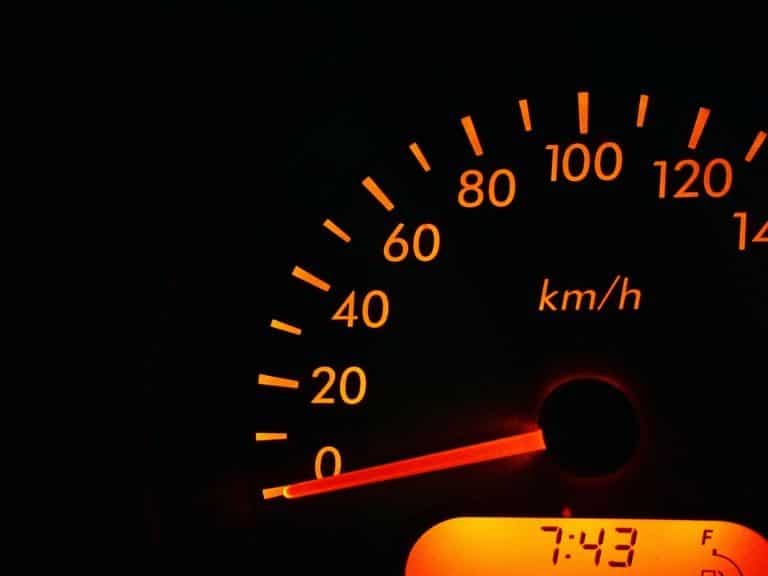
Before your car reaches the point where it won't start, a few tell-tales signs could mean your battery is on the way out. Noticing these can help you catch a problem before you're left stranded.
A clicking noise
The engine clicking over when turning on the ignition is a classic sign you have a problem related to your battery. Even if your car does eventually start, you'll want to get this looked at sooner rather than later.
Intermittent starting
If your car starts some days but not others, it’s a sign something isn’t quite right. It might be cold weather, but it could be a sign of battery problems or something more serious.
Dim lights
Have you noticed your headlights don't seem as bright as usual? It could be a sign your battery is on the way out. Whatever reason, it's worth getting to the bottom of why your lights aren't at their brightest.
Corrosion
Any corrosion on your car battery is worth investigating. This is particularly a problem for older batteries, and when the corrosion gets severe enough, it can leave your battery unable to charge. When your battery reaches this point, you'll have to replace it.
It hasn't been changed in 4+ years
Everything has an expected lifespan, and car batteries are no different. However, as mentioned above, older batteries are more susceptible to corrosion which can destroy the battery.
Have issues with your battery and not sure what to do next? Call Bliss Mechanics in Sunshine Coast, Australia at tel: 5325 1120, and our friendly team will help you out.